Enhancing Electrical Safety in the UAE: A Guide for Engineers & Technicians
Staring down a live panel in the UAE's demanding industrial landscape is a different beast altogether. The intense heat, humidity, and pervasive dust don't just test your team; they actively accelerate equipment degradation. This creates hidden electrical hazards that standard, one-size-fits-all safety checklists often miss completely. That's why specialized electrical safety training isn't just a compliance item—it's a critical operational necessity for engineers, panel builders, and electricians across the GCC.
Why Standard Safety Protocols Fall Short in the GCC
Working on electrical systems in the UAE and the wider GCC region presents a unique set of challenges that generic safety protocols, often designed for milder climates, simply fail to address. The region's extreme environmental conditions directly impact both equipment integrity and human performance, creating a higher-risk environment where standard precautions can fall dangerously short.
For engineers and electricians on the ground in Dubai or Abu Dhabi, this means facing risks that aren't always obvious. High ambient temperatures can cause nuisance tripping in circuit breakers and accelerate the degradation of cable insulation, leading to unexpected faults. The constant battle with humidity and dust—common challenges for any electrical components UAE-based teams use—can create conductive pathways on surfaces that should be non-conductive, seriously heightening the risk of an arc flash incident.
The reality is that a safety checklist developed for a European or North American climate doesn't account for the operational stresses placed on electrical components in the GCC. Relying on such protocols creates a false, and frankly dangerous, sense of security.
The Real-World Impact on Safety
These environmental factors have tangible, and sometimes tragic, consequences. Statistics from the region highlight a critical gap that only targeted training can fill. In the United Arab Emirates, electrical accidents are a significant concern, accounting for a substantial portion of all workplace incidents. A 2023 report from the Abu Dhabi Occupational Safety and Health Center revealed that approximately 18% of reported workplace incidents involved electrical faults or contact with live components.
This data underscores the urgent need for a more nuanced approach. For instance, understanding and implementing comprehensive workplace safety procedures is a foundational step, but it must be adapted to local conditions and regulations to be effective.
The good news? Firms that invest in robust, region-specific electrical safety training see a dramatic improvement. Data from the Ministry of Human Resources and Emiratisation (MOHRE) shows that companies with such programs reduce electrical injury rates by as much as 40%. You can learn more about how this type of training directly supports compliance with local standards in this insightful article about NFPA 70E updates and their importance in the workplace.
The business case is crystal clear. Specialized electrical safety training moves beyond just ticking a compliance box. It builds genuine competency, protects your most valuable assets—your people—and directly addresses the operational realities of working in the GCC. It's about equipping your team with the knowledge to anticipate and mitigate hazards that are unique to this demanding environment.
Building a Modern Electrical Safety Program for the GCC
An effective electrical safety program isn't just a binder collecting dust on a shelf; it's a living strategy molded to your specific operational risks. A truly solid framework goes beyond simple compliance to build genuine competency and confidence in your team. This starts with a practical needs analysis of your facility, whether you're a panel builder in Dubai or managing a maintenance crew in Abu Dhabi.
This requires a fundamental shift in how we think about safety. Instead of just asking, "Are we compliant?" the better question is, "Are our people truly competent and prepared for the hazards on this site?" This means designing training that covers local regulations from authorities like DEWA or ADDC and tackles the real-world challenges posed by the GCC's unique climate (heat, dust, and humidity).
Take a look at this. It highlights common electrical hazards that are exacerbated by the environmental factors we face in the region.
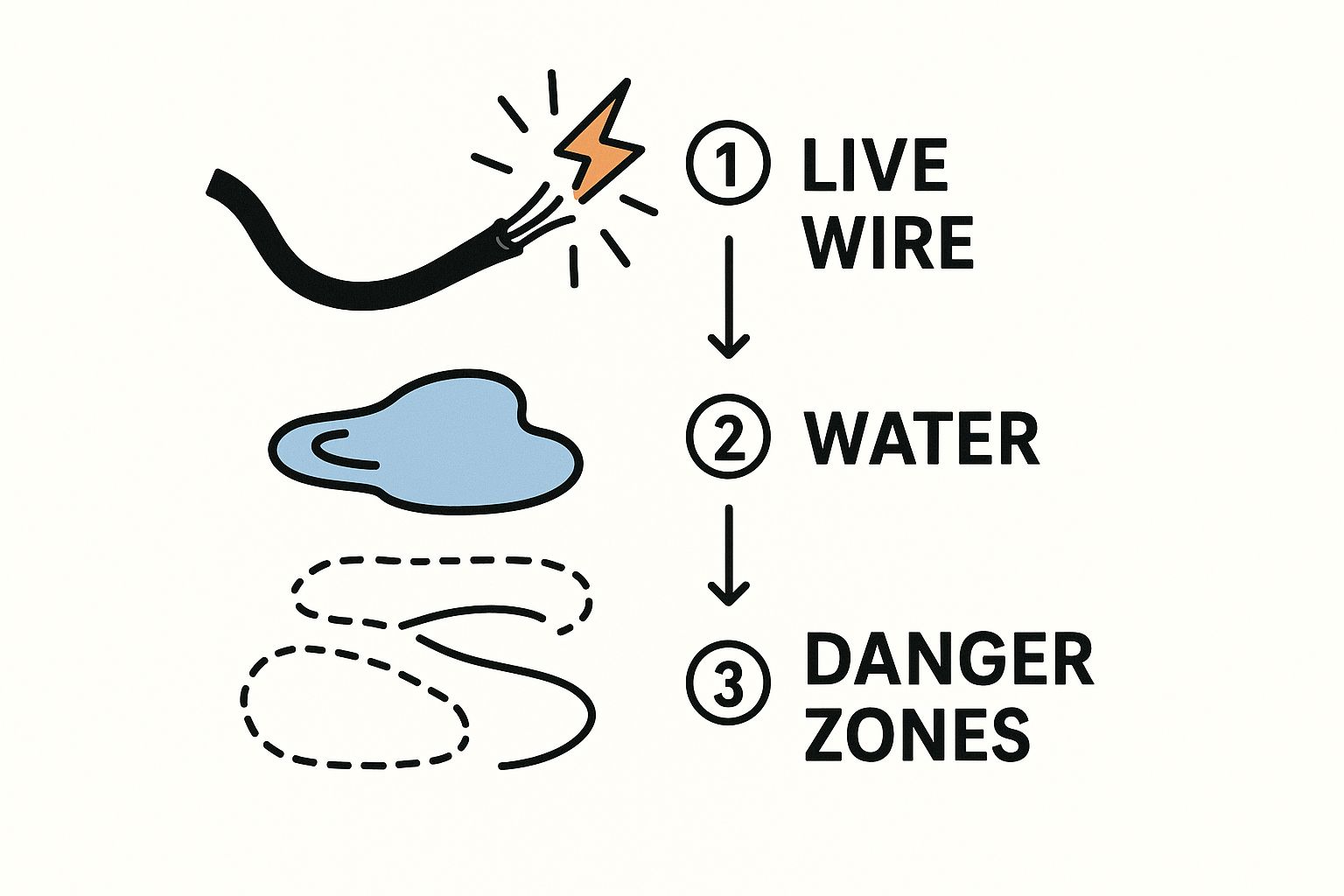
This shows how a seemingly minor issue, like moisture ingress or damaged insulation, can escalate into a critical safety event in a high-risk industrial setting.
Conducting a Practical Needs Analysis
First, you need a clear picture of your team's current capabilities. This isn't a paper-pushing exercise. It means taking a hard, honest look at your operations, equipment, and people to find specific knowledge gaps and procedural weak spots before they cause an incident.
A good analysis involves:
- On-site Observations: Watching teams perform routine work can reveal a huge gap between written procedures and what actually happens on the floor. Are they using test instruments correctly? Is Lockout/Tagout (LOTO) being performed every single time?
- Reviewing Incident Reports: Dig into your past near-misses and minor incidents. This is a goldmine of data on recurring problems and hidden hazards.
- Interviewing Your Team: Electricians and maintenance staff on the ground often know the daily risks better than anyone. Their feedback is invaluable for creating training that feels relevant and useful.
This process helps you pivot from generic safety talks to focused, high-impact electrical safety training that addresses the real risks your team faces every day.
Setting Clear and Actionable Learning Objectives
Once you know what to fix, you can set meaningful learning objectives. These must be specific, measurable, and focused on building real skills—not just memorizing rules. Vague goals like "improve safety" are useless.
Instead, aim for concrete outcomes:
- Technicians will be able to correctly identify and classify Arc Flash hazards based on NFPA 70E standards.
- All panel builders will demonstrate the proper procedure for selecting, inspecting, and using Personal Protective Equipment (PPE) for high-voltage work.
- Maintenance staff will be able to perform a verified LOTO procedure on three different types of machinery found in our facility.
The objective is to cultivate confidence, not just compliance. A technician who understands the 'why' behind a safety rule is far more likely to follow it in a high-pressure situation than one who has only been told the 'what'.
To build out a robust program, you also have to understand the wider regulatory landscape. It's worth looking into comprehensive safety training requirements as they provide a solid foundation for any industry. This knowledge ensures your program is not only effective on the ground but also aligns with internationally recognized best practices.
Core Components of an Effective Electrical Safety Training Program
Here’s a table outlining the essential modules for a well-rounded electrical safety curriculum, specifically geared for the industrial environment here in the GCC.
| Training Module | Key Learning Objectives | Target Audience | Relevant Standard |
|---|---|---|---|
| Introduction to Electrical Safety | Understand fundamentals of electricity, common hazards (shock, arc flash), and the importance of a safety culture. | All personnel | OSHA 1910 Subpart S |
| Lockout/Tagout (LOTO) | Demonstrate proper LOTO procedures for various equipment types to ensure de-energization before maintenance. | Maintenance staff, contractors | OSHA 1910.147 |
| Arc Flash Hazard Analysis | Identify and classify arc flash risks, understand boundary requirements, and interpret warning labels. | Electricians, panel builders | NFPA 70E |
| Personal Protective Equipment (PPE) | Select, inspect, and correctly use appropriate PPE, including voltage-rated gloves and arc-rated clothing. | All personnel working on or near energized equipment | NFPA 70E |
| Emergency Response | Execute emergency shutdown procedures and provide immediate first aid for electrical shock victims. | Local civil defense codes | |
| GCC-Specific Regulations | Understand local utility requirements (e.g., DEWA, ADDC) and how environmental factors impact safety. | Facility managers, supervisors | Local utility standards |
This groundwork—a thorough needs analysis paired with sharp, actionable learning objectives—is the bedrock of any effective electrical safety training. It’s how you ensure your investment in training translates directly into a safer, more competent workforce prepared for the unique demands of the GCC’s industrial environment.
Integrating Critical Safety Protocols into Daily Work

Knowing the theory is one thing. Applying it flawlessly under pressure on a noisy, complex job site is what saves lives. The purpose of electrical safety training is to close that gap—to take safety protocols off the page and embed them into the muscle memory of every technician and engineer.
The real objective is to build the situational awareness and automatic responses required in high-stakes environments. When a team truly internalizes these procedures, safety stops being a checklist and becomes a proactive mindset.
Mastering Lockout/Tagout in Complex Environments
Lockout/Tagout (LOTO) is the cornerstone of electrical safety, but in complex industrial facilities, it's rarely simple. In the UAE, we see vast sites with interconnected machinery, multiple power sources, and backup systems. A basic understanding is not enough.
A systematic, ironclad process that leaves zero room for error is essential. A single tag on a breaker is a recipe for disaster. Consider a large-scale HVAC system—it might have multiple disconnects, auxiliary power from a UPS, and control circuits fed from a different panel. Miss one energy source, and you've created a potentially fatal situation.
To get LOTO right every time, your team's training must revolve around a practical, verifiable checklist.
Essential LOTO Verification Checklist
- Identify All Energy Sources: Have you tracked down and documented every primary, secondary, and stored energy source? This includes electrical feeds plus capacitors, springs, and hydraulic pressure.
- Notify Affected Personnel: Has everyone in the immediate area been clearly informed about what's being shut down and why?
- Isolate and Lock: Has every energy-isolating device been located, switched to the "off" position, and physically secured with an assigned lock and tag?
- Verify De-Energization: This is the non-negotiable step. Has a properly calibrated test instrument been used to confirm the absence of voltage on every conductor? This occurs after the locks are on but before a single tool touches the equipment.
- Test-Verify-Test Method: Does the technician first test their meter on a known live source, then test the target circuit, and finally re-test the meter on that same known live source? This confirms the meter is working correctly.
A LOTO procedure isn't complete until you've physically verified zero energy with a meter you know is working. Assuming a circuit is dead because you flipped a switch is one of the deadliest gambles in our field.
Demystifying Arc Flash Hazard Analysis
If LOTO is about preventing incidents during planned work, arc flash protection is about shielding your people from the brutal physics of an accidental fault on live gear. Knowing the NFPA 70E standard is essential, but the real skill is applying it to the unique regulatory and environmental conditions we face in the UAE.
An arc flash is a violent explosion of plasma and molten metal that can inflict fatal burns and blast-wave injuries. The hazard analysis is a detailed engineering study that calculates the potential severity of an arc flash for a specific piece of equipment.
This analysis provides two critical pieces of information for safety:
- Arc Flash Boundary: The "stay-out" zone. It's the distance from the equipment where an unprotected worker could suffer a second-degree burn if an arc flash occurred. No one crosses this line without the right gear.
- Incident Energy: This value, measured in calories per square centimeter (cal/cm²), indicates the heat energy a worker would be exposed to. This number is used to select the correct Arc-Rated (AR) Personal Protective Equipment (PPE).
If a panel label reads 8.5 cal/cm², anyone working inside the arc flash boundary needs to wear PPE with a rating of at least 8.5 cal/cm² to be protected.
From Theory to Muscle Memory
Ultimately, the goal of any electrical safety training program is to make these complex procedures second nature through hands-on repetition and realistic simulation.
Drilling LOTO procedures on mock-ups of your actual equipment or running through PPE selection for different arc flash scenarios in a controlled setting builds the confidence and automaticity your team needs. This hands-on approach should extend to every part of a system. When technicians build panels, their training should cover the physical best practices for installing components safely. You can see how critical component choice is in our guide on choosing the right terminal block for your application.
When you integrate this level of detail, safety becomes a core part of every stage—from design to maintenance—building a truly resilient safety culture.
Choosing the Right Training Delivery for Your Team
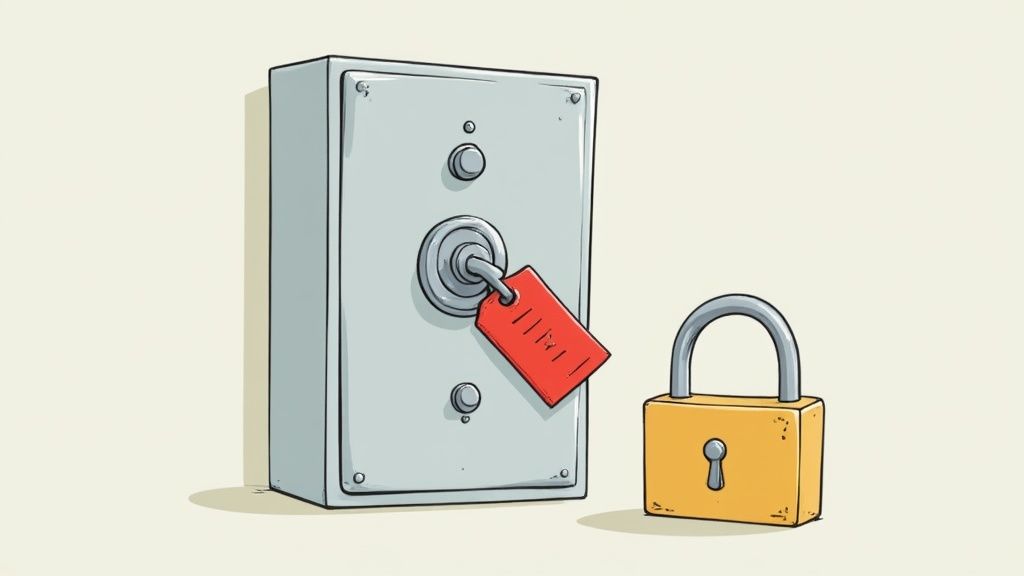
How your team learns is just as important as what they learn. Picking the right training format is a key decision for procurement managers and team leads, directly impacting skill retention, engagement, and ROI on safety. A one-size-fits-all approach doesn't work for the diverse roles of electricians, panel builders, and engineers across the UAE.
The most effective electrical safety training strategies often blend different delivery methods. This hybrid approach ensures foundational knowledge is covered efficiently while practical skills are honed in a setting that mimics the real job site. The goal is a program that’s both technically precise and relevant to your team's daily work.
Comparing Training Formats
The choice between in-person workshops, on-site sessions, or online modules depends on your specific goals and the skills you need to build.
- In-Person Workshops: Ideal for deep dives into complex topics like NFPA 70E standards or arc flash hazard calculations. Held off-site, they remove daily distractions and foster peer-to-peer discussion.
- On-Site Practical Sessions: This is where theory meets reality. Training at your facility with your team's actual equipment is invaluable for hands-on skills like LOTO procedures, building muscle memory and site-specific confidence.
- Online E-Learning Modules: For scalability and flexibility, online training is excellent. It's ideal for foundational knowledge, compliance refreshers, and introducing new concepts, allowing team members in different locations—from Abu Dhabi to a remote facility—to learn at their own pace.
A recent survey of electrical workers in the UAE found that while 68% attend formal safety training regularly, many feel it doesn't adequately cover emerging risks from new technologies in smart infrastructure. This highlights the need for dynamic training that keeps pace with the industry.
The Power of Hands-On Simulation
For critical, life-saving skills, there is no substitute for hands-on practice. Immersive, practical simulations are game-changers for building genuine competence and confidence.
Reading about a LOTO procedure isn't the same as physically applying the locks and verifying zero energy with a meter. It’s this practical application that cements learning and ensures procedures are followed correctly under pressure.
Simulations should focus on high-risk tasks that are difficult to practice on live equipment:
- Proper Tool Handling: Using calibrated test instruments and insulated tools correctly.
- Emergency Response Drills: Reacting to a simulated electric shock or arc flash incident.
- PPE Selection and Use: Donning and doffing different levels of arc-rated gear for various hazard levels.
This hands-on element is non-negotiable for building a resilient safety culture. As you assess your team’s needs, look for programs offering specialized Electrical Safety training that cover these essential practices.
Selecting Certified and Experienced Trainers
The final, and perhaps most critical, piece of the puzzle is the instructor. A trainer's real-world experience and credentials can make or break your program. They must connect the material to the local context of the UAE and GCC.
Look for trainers with:
- Verifiable Certifications: Ensure they are certified by recognized bodies to teach standards like NFPA 70E.
- On-the-Ground GCC Experience: A trainer who understands the unique challenges of heat, dust, and humidity on electrical systems in Dubai will deliver far more impactful content.
- Industry-Specific Knowledge: If your team builds panels, find a trainer with a panel-building background. They'll speak the same language, making the training more credible and relatable.
The right delivery method, powerful simulations, and an expert trainer will transform your electrical safety training from a simple compliance exercise into a powerful tool for operational excellence that keeps your people safe.
Measuring Training Effectiveness and Ensuring Compliance
A top-tier electrical safety training program is a serious investment that requires measuring its returns. The real proof is on the job site—fewer near-misses, flawless execution of safety protocols, and a team that spots hazards before they become problems. This requires a structured way to assess both knowledge and its real-world application, creating a constant feedback loop to keep training sharp, relevant, and compliant with GCC regulations.
Moving Beyond Written Tests
Written tests only reveal so much. An electrician can ace a quiz on Lockout/Tagout (LOTO) and still miss a critical step on the plant floor. True competence is about action, not theory.
To get the full picture, combine different assessment methods:
- On-the-Job Observations: Supervisors should conduct regular, informal checks to spot gaps between classroom learning and floor practices in a low-pressure setting.
- Skill Demonstrations: For non-negotiable processes like LOTO or testing for the absence of voltage, have team members walk you through it step-by-step. This is the ultimate proof of competence.
- Scenario-Based Assessments: Test their problem-solving skills with realistic scenarios, such as servicing equipment with multiple power feeds.
This approach confirms that lessons from your electrical safety training have been truly learned and are being put into practice.
Creating a Continuous Improvement Loop
A safety program must evolve. The best systems use new information and feedback to stay focused on immediate risks.
A solid feedback loop relies on key inputs:
- Incident and Near-Miss Data: Every near-miss is a free lesson. Analyze these events to find weak spots in your procedures or training.
- Team Feedback: Ask your engineers and electricians for honest input on the training. Was it practical? What was missing? This improves the program and fosters ownership.
- Regulatory Updates: Standards from authorities like MOHRE or DEWA change. Your training must be updated to reflect the latest rules and maintain compliance.
By treating every near-miss and piece of feedback as valuable data, you transform your safety program from a reactive requirement into a proactive, continuously improving system.
Maintaining Records and Scheduling Refresher Courses
In the UAE, meticulous record-keeping is non-negotiable for compliance and is a powerful management tool. You must have a solid system for tracking who was trained, when, and on what topics.
This documentation is your proof of due diligence and should include:
- Employee Name and ID
- Date of Training
- Training Content/Modules Covered
- Trainer's Name and Credentials
- Assessment Results or Competency Verification
Refresher training is critical for keeping skills sharp. While standards like NFPA 70E suggest refreshers at least every three years, best practice in high-hazard GCC industries often requires more frequent updates. Schedule a refresher whenever a job role changes, new equipment is installed, or an incident reveals a training need. An effective electrical risk assessment is a dynamic process that should inform both your initial and refresher training schedules. You can learn more by exploring our detailed guide on how to conduct a comprehensive electrical risk assessment.
By systematically measuring effectiveness and adhering to a rigorous update schedule, you ensure your investment in electrical safety training yields the ultimate dividend: a safer, more compliant, and more productive workforce.
Building a Lasting Culture of Electrical Safety
We've covered the essentials: localized risk assessment, practical protocols, tailored training, and continuous measurement. But the real goal is to weave these principles so deeply into your company’s DNA that electrical safety training becomes a shared cultural value.
The aim is to empower every person—from apprentice to project manager—to be a safety leader. This cultural shift happens when people understand the "why" behind every procedure and feel they can and should speak up when they spot a risk.
A genuine safety culture isn't about policing every action. It’s when the safe choice becomes the easy and obvious choice, backed by everyone from the top down. It’s a collective commitment to ensuring everyone goes home safe.
As you elevate your standards, remember that GoSwitchgear is more than a supplier. We are your partner on the ground in Dubai, dedicated to helping you build safer, more resilient operations across the UAE and GCC.
When you focus on culture, you build an organization that doesn’t just meet regulations. You build a team that actively eliminates risks before they become incidents. In the high-stakes electrical field, that proactive mindset is what separates the best from the rest.
Our team in Dubai is ready to offer expert support for your projects in Abu Dhabi and across the region. Whether you need advice on selecting components that enhance safety or resources for your next project, we’re here to help you build systems that are not just efficient and reliable, but fundamentally safe.
Your Questions Answered
When it comes to electrical safety, there's no room for ambiguity. Here are some straightforward answers to the questions we frequently hear from engineers, facility managers, and procurement teams across the UAE.
What’s the Most Important Electrical Safety Standard in the GCC?
While you must follow local regulations from authorities like DEWA and ADDC, the global gold standard is NFPA 70E, the Standard for Electrical Safety in the Workplace. It's the benchmark for a reason.
A solid training program integrates both. Think of NFPA 70E as the foundational "why" behind safety practices, and your local rules as the specific "how" for your site. This integrated approach is the only way to achieve comprehensive compliance and practical safety.
How Often Do Our Electricians Need Refresher Training?
The official answer, aligned with standards like NFPA 70E, is that refresher training should happen at least every three years. But that's the bare minimum.
You should conduct electrical safety training more frequently if you see any of these changes:
- New Responsibilities: A technician is promoted or moves to a role with different equipment or higher voltage levels.
- New Equipment: You've installed new machinery, VFDs, or control systems.
- After an Incident: After any safety incident or serious near-miss, immediate retraining is critical to prevent recurrence.
Waiting for the three-year mark can create dangerous knowledge gaps.
A proactive safety culture sees training as an investment. We've found that annual refreshers for high-risk teams are the smartest way to keep life-saving skills sharp.
Is Online-Only Electrical Safety Training Good Enough for Our Team?
Online training modules are fantastic for foundational theory, regulations, and principles, especially for teams across multiple sites in the UAE.
However, for a high-stakes field like electrical work, online-only training is nowhere near sufficient. It misses the most critical element: hands-on, practical skill development.
You cannot effectively teach Lockout/Tagout (LOTO), multimeter verification, or proper PPE use through a screen. The best approach is a hybrid one: use e-learning for theory and bring in experts for in-person sessions to drill practical skills until they become second nature.
At GoSwitchgear, we know that a world-class safety culture is built on a foundation of quality components and expert knowledge. We’re here to support your projects with reliable electrical solutions that meet the demanding standards of the UAE and GCC.
Explore our full range of electrical components and access technical resources today.





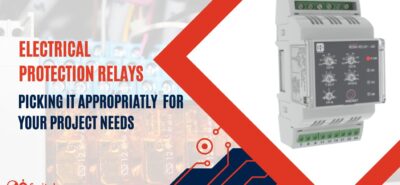
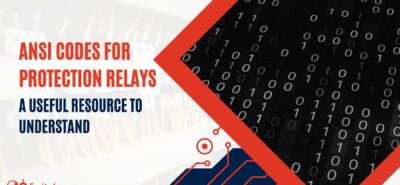
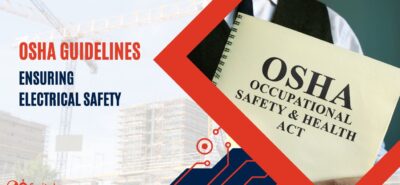


Leave a Reply